Abstract
1. It is well established that tactile acuity is greater over digits than over the proximal parts of the upper limb and that the corticospinal projection is especially dense for distal muscles. To determine whether the acuity for judgements of forces exerted by distal muscles differed from that for proximal muscles, a weight-matching task was used with first dorsal interosseous, flexor pollicus longus and elbow flexors. 2. Reference weights equivalent to approximately 3% (light) and 15% (heavy) of the maximal voluntary contraction were lifted by one muscle group on the left. They were matched with a variable weight, lifted by the same group, on the right. 3. In naive subjects, the coefficient of variation for repeated estimates of perceived heaviness was significantly lower for proximal than distal muscles. Measured in this way, 'accuracy' (i.e. reproducibility of the estimates) was not greater for the intrinsic muscles of the hand. This result could not be explained by the way in which the weights were supported by the index finger. When the data were expressed as the relative difference between the reference and the matched weight, each muscle group behaved similarly. 4. For a particular muscle, accuracy was greater when the heavy rather than the light weights were lifted. 5. Given that estimates of forces and heaviness are biased by signals of central motor command (McCloskey, 1981; Gandevia, 1987; Cafarelli, 1988; Jones, 1988). these signals could be graded no more finely for distal than proximal muscles. Furthermore, relative accuracy was greater for forces at the high rather than the low end of the comfortable 'matching' range of force for a particular muscle.
Full text
PDF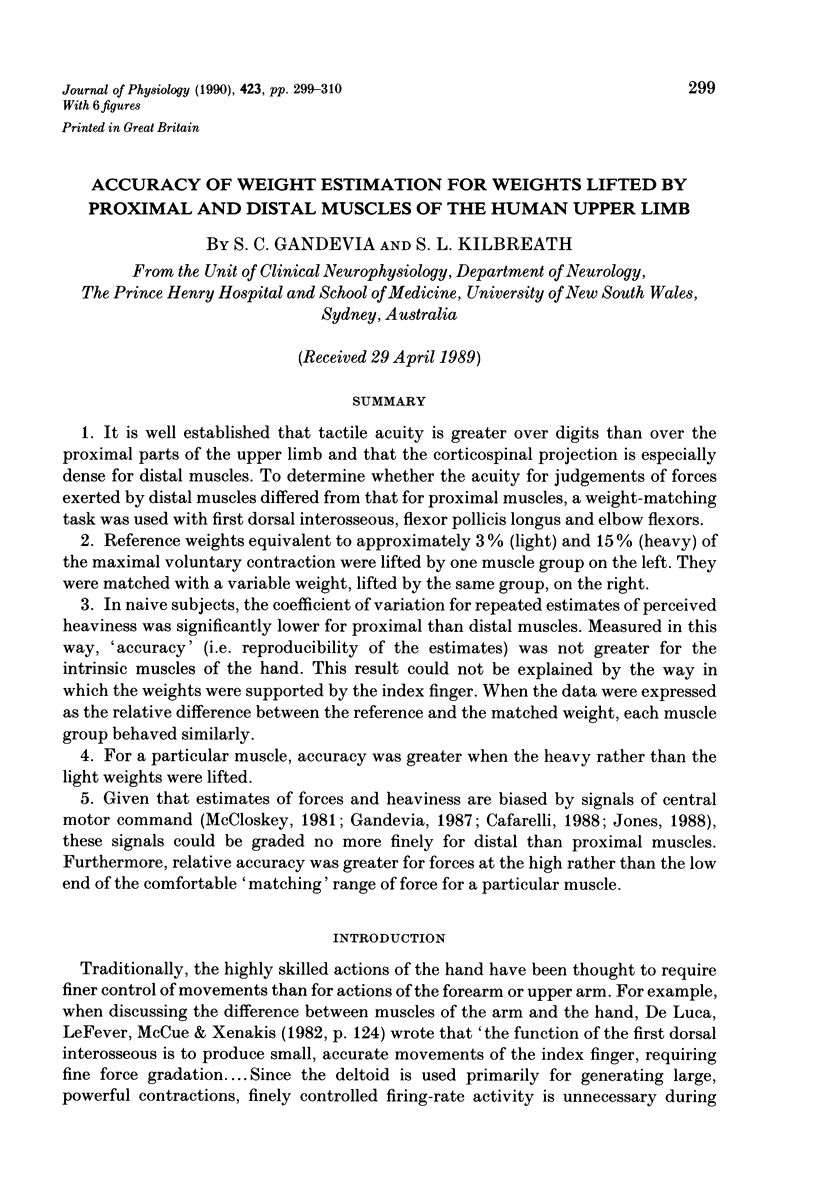
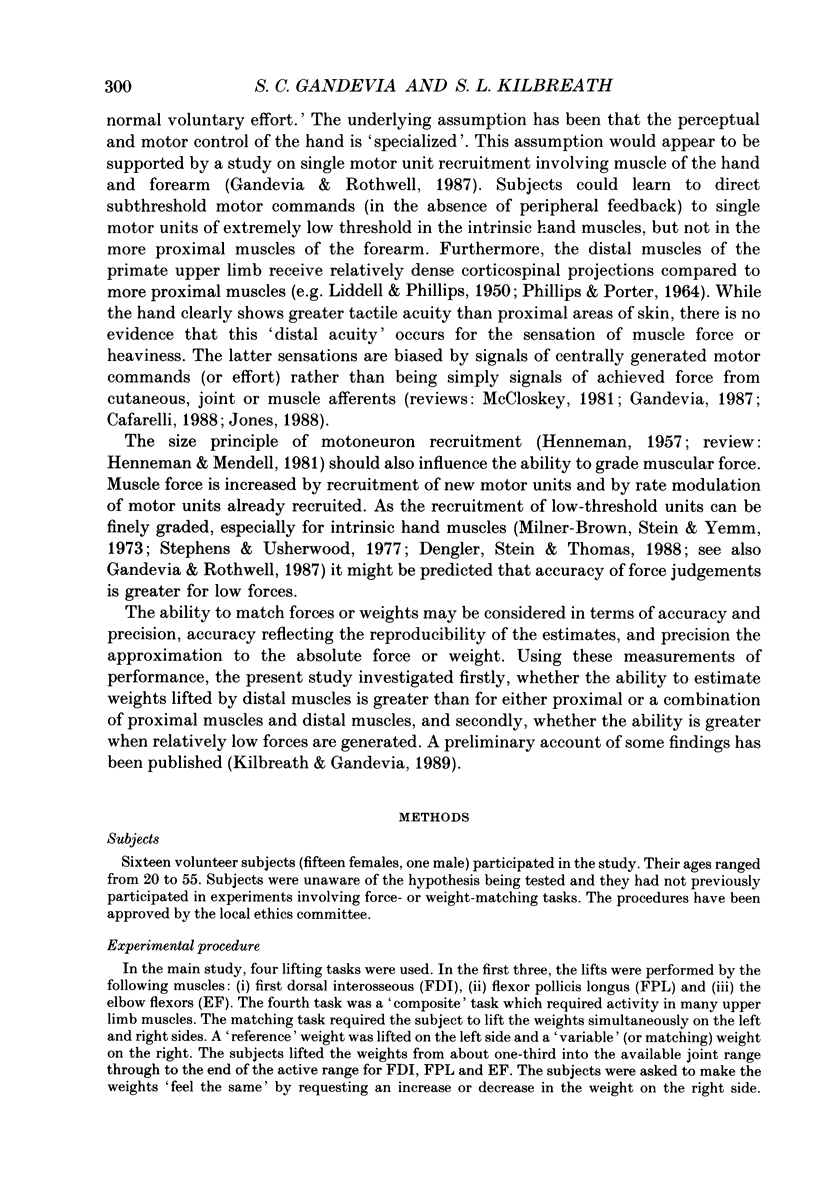
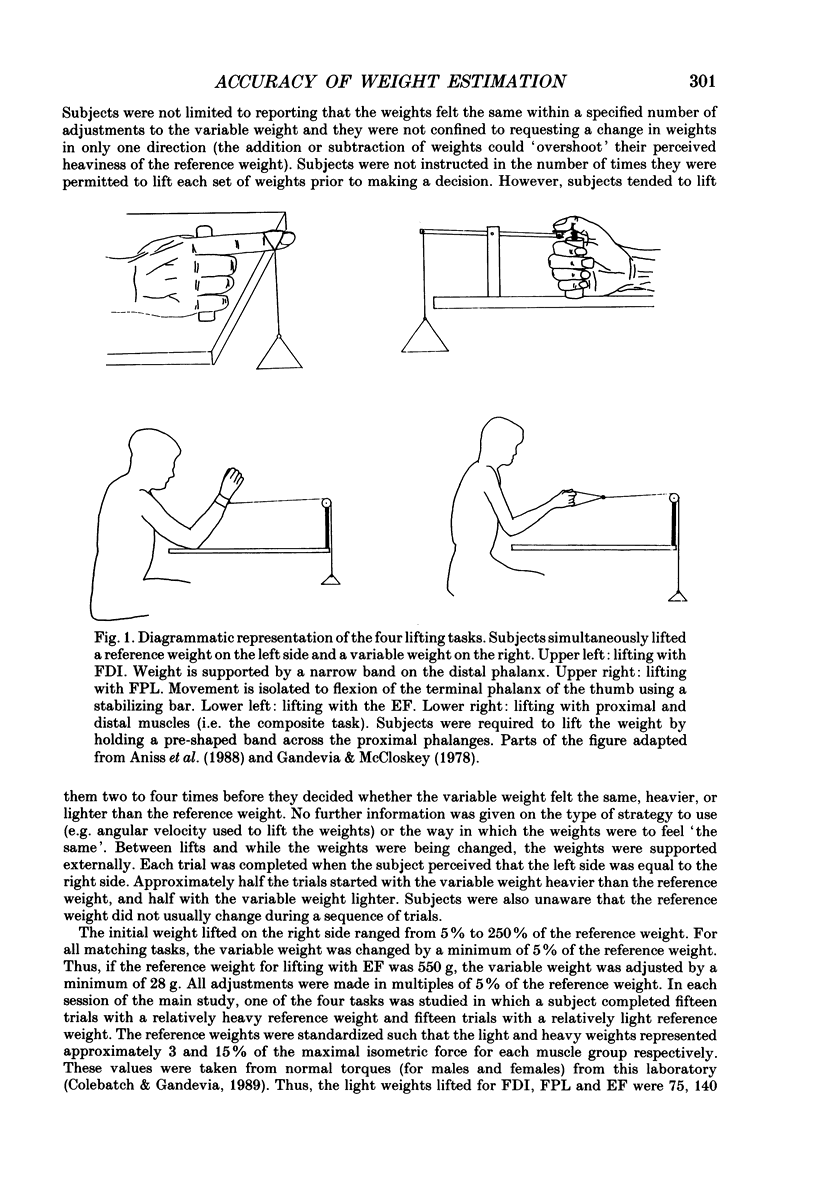
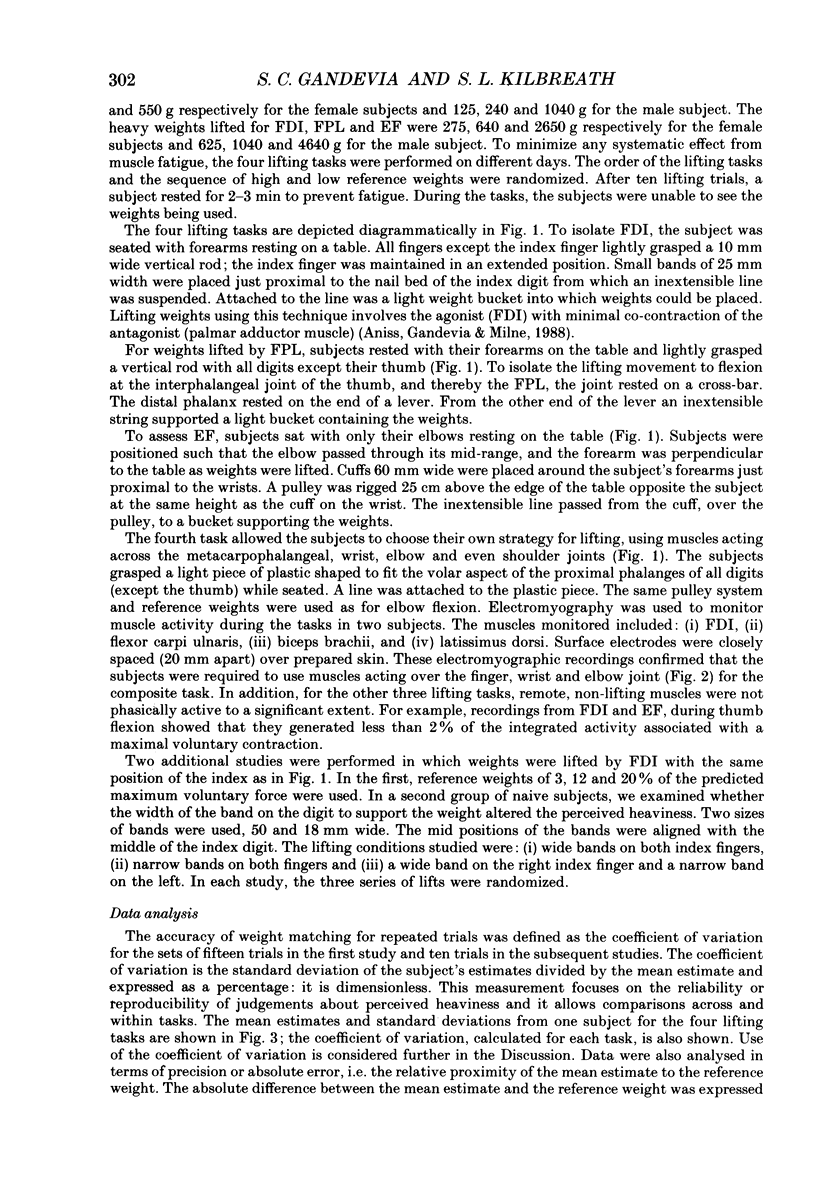
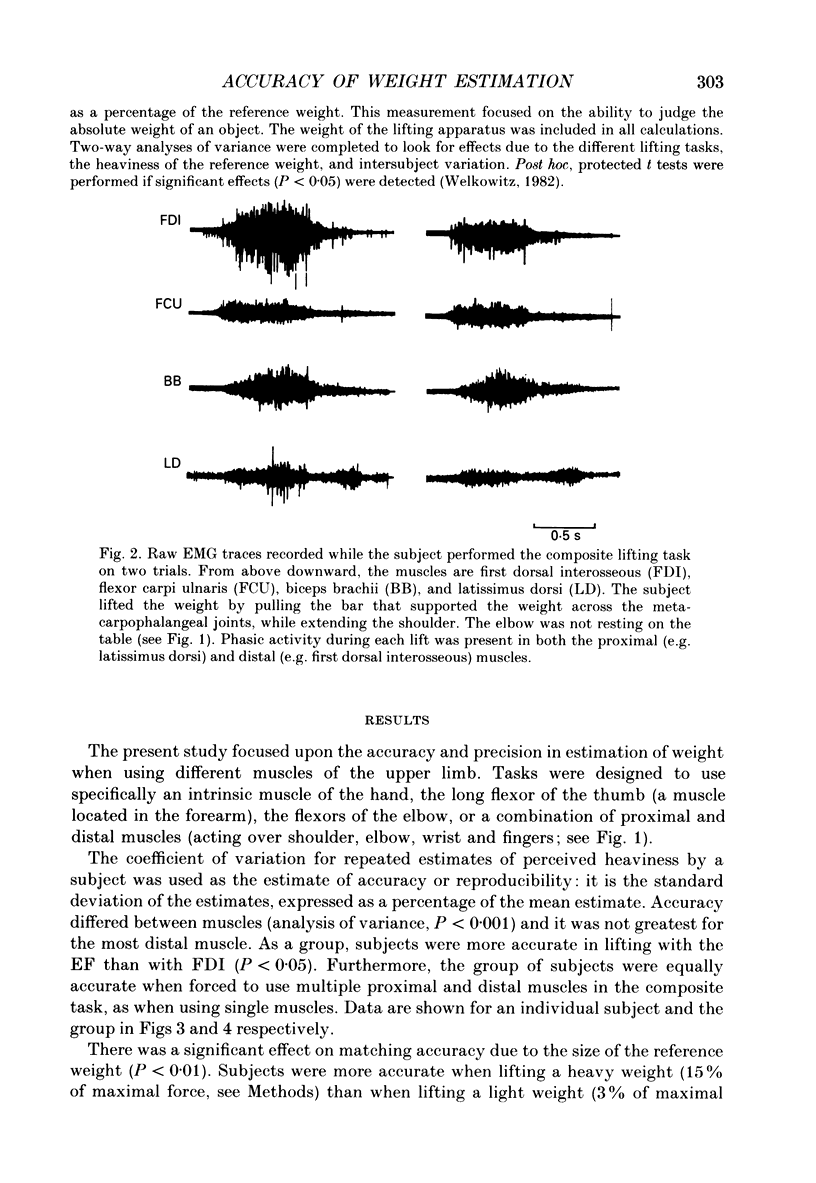
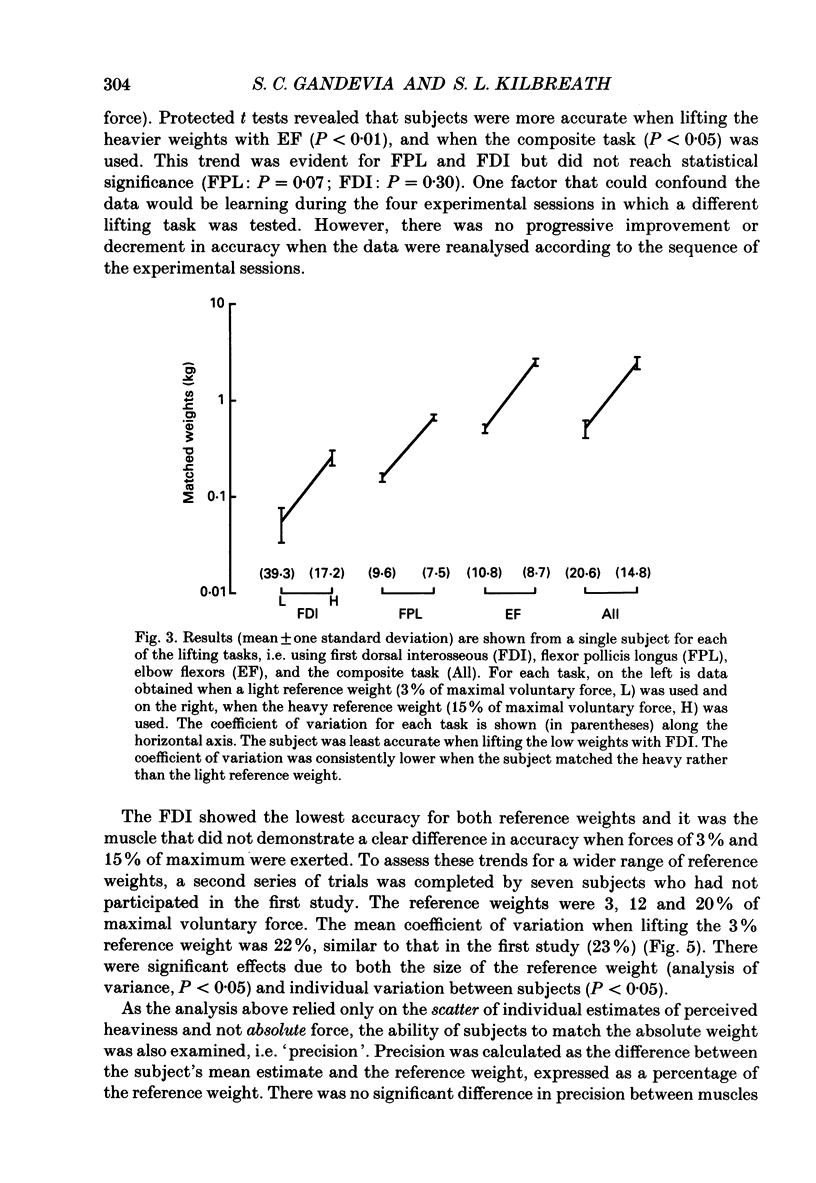
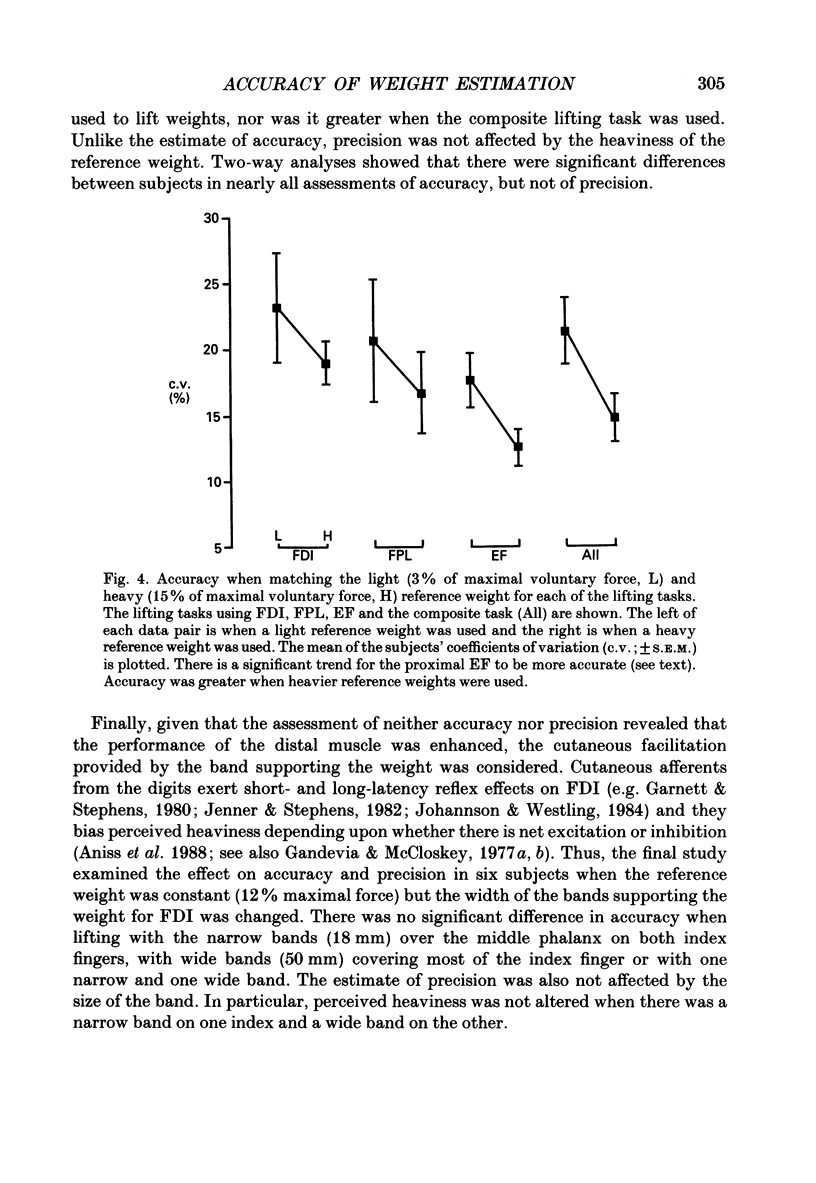
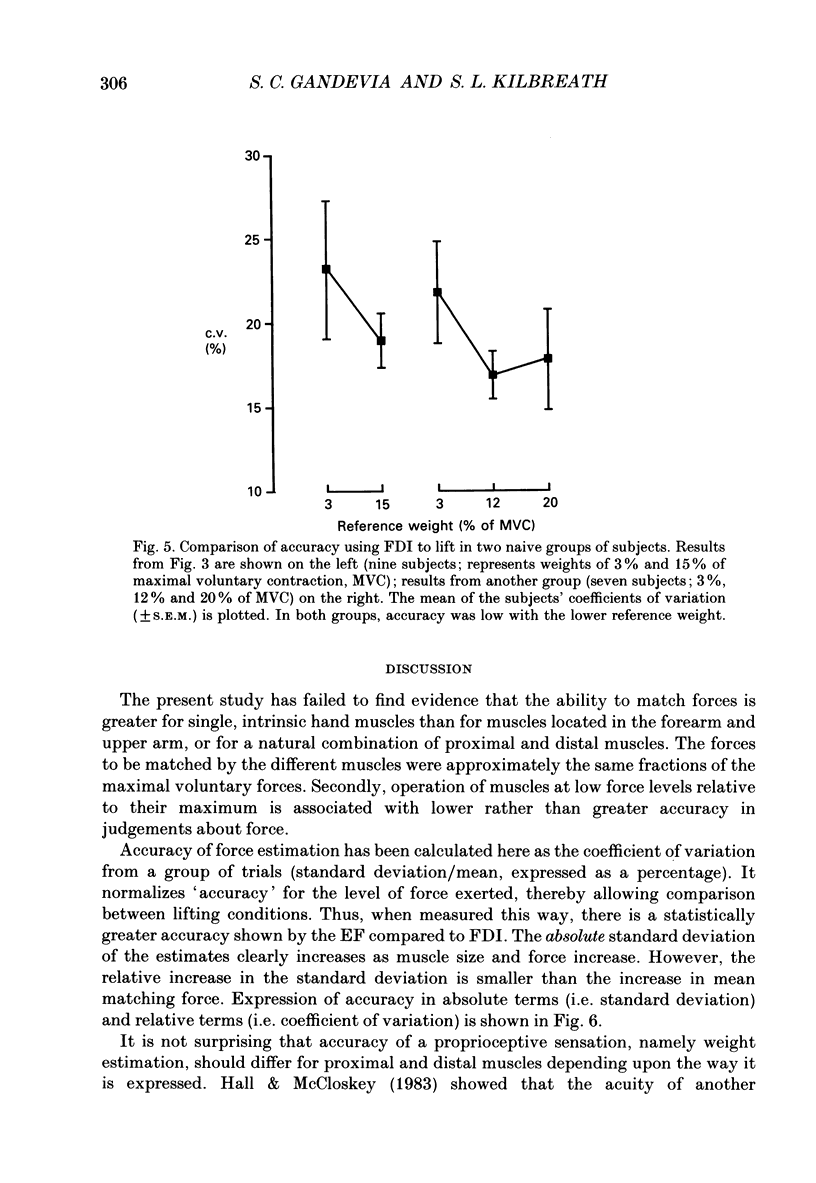
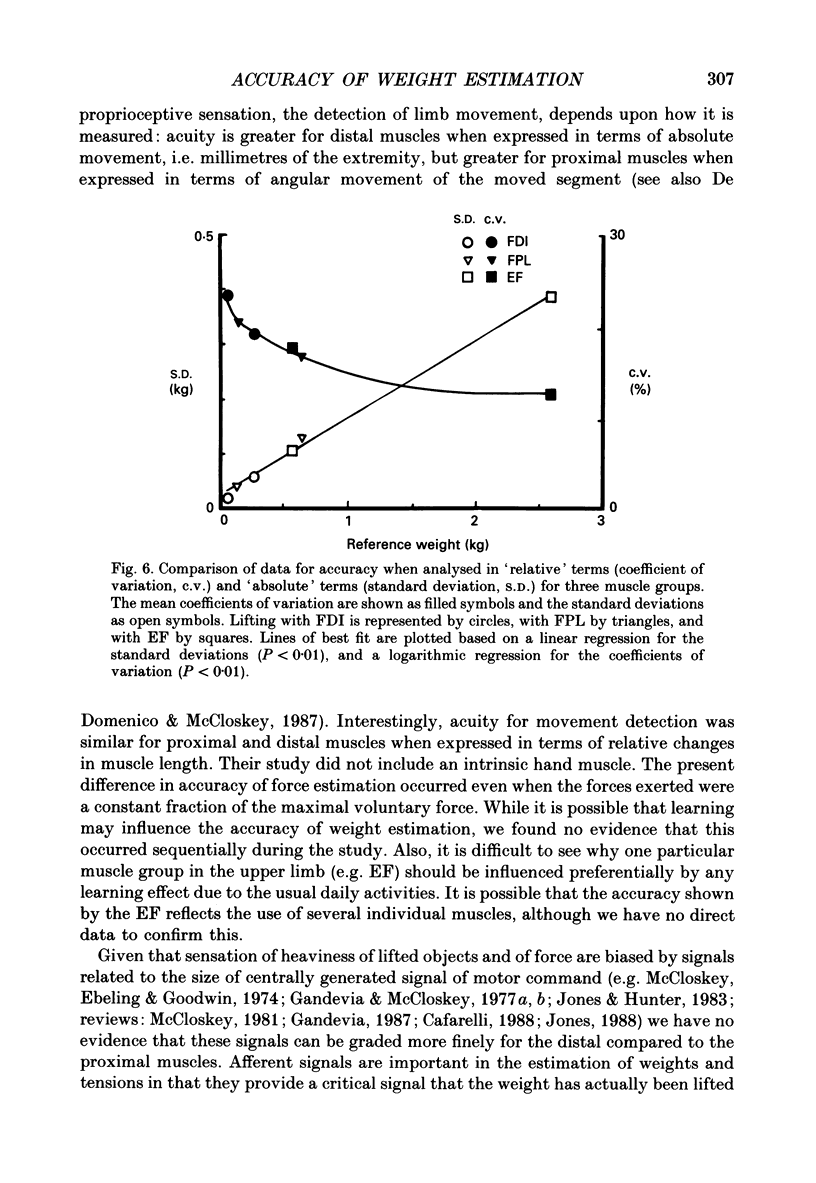
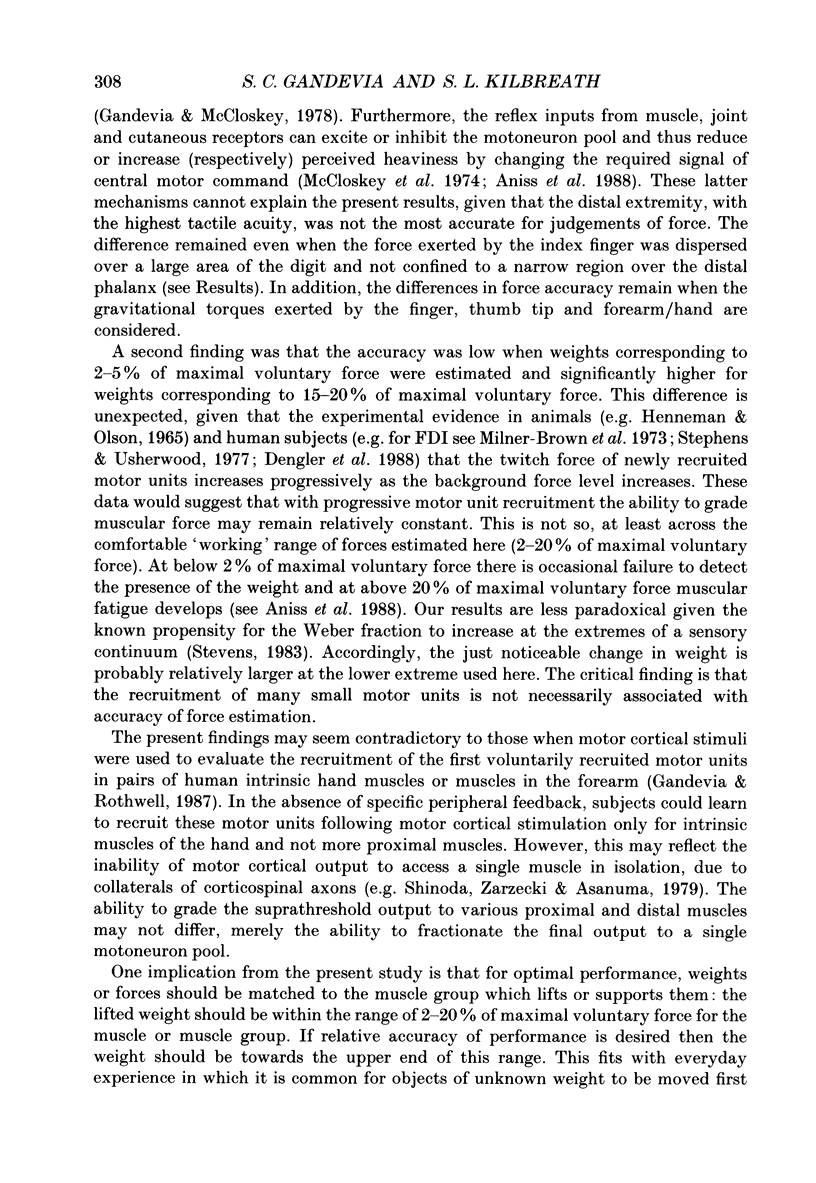
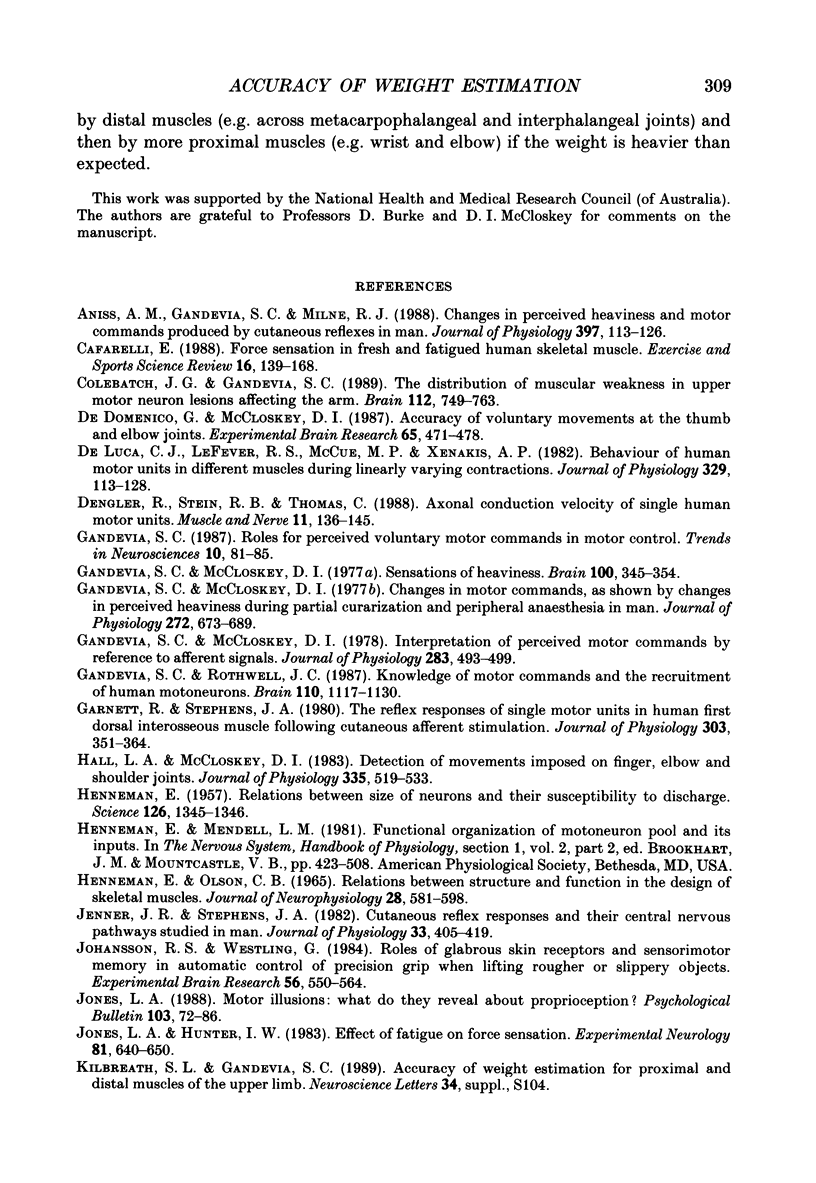
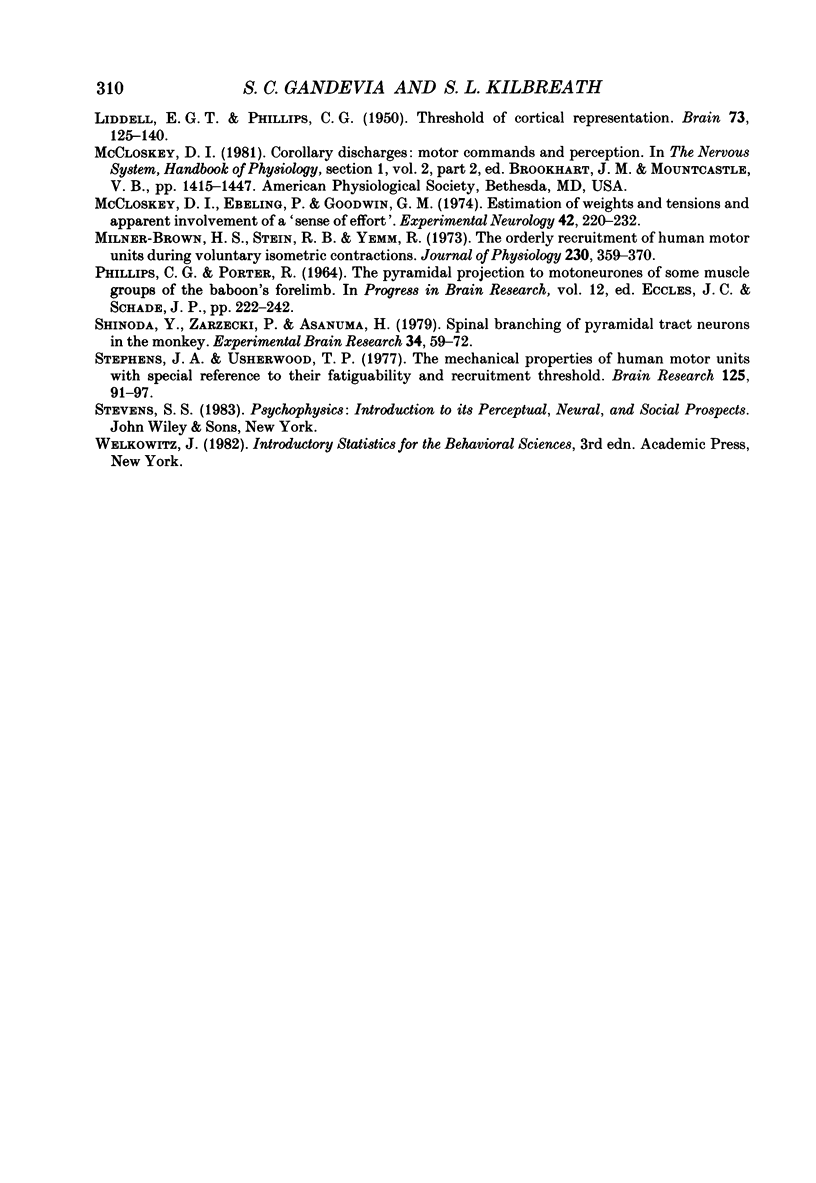
Selected References
These references are in PubMed. This may not be the complete list of references from this article.
- Aniss A. M., Gandevia S. C., Milne R. J. Changes in perceived heaviness and motor commands produced by cutaneous reflexes in man. J Physiol. 1988 Mar;397:113–126. doi: 10.1113/jphysiol.1988.sp016991. [DOI] [PMC free article] [PubMed] [Google Scholar]
- Cafarelli E. Force sensation in fresh and fatigued human skeletal muscle. Exerc Sport Sci Rev. 1988;16:139–168. [PubMed] [Google Scholar]
- Colebatch J. G., Gandevia S. C. The distribution of muscular weakness in upper motor neuron lesions affecting the arm. Brain. 1989 Jun;112(Pt 3):749–763. doi: 10.1093/brain/112.3.749. [DOI] [PubMed] [Google Scholar]
- De Domenico G., McCloskey D. I. Accuracy of voluntary movements at the thumb and elbow joints. Exp Brain Res. 1987;65(2):471–478. doi: 10.1007/BF00236321. [DOI] [PubMed] [Google Scholar]
- De Luca C. J., LeFever R. S., McCue M. P., Xenakis A. P. Behaviour of human motor units in different muscles during linearly varying contractions. J Physiol. 1982 Aug;329:113–128. doi: 10.1113/jphysiol.1982.sp014293. [DOI] [PMC free article] [PubMed] [Google Scholar]
- Dengler R., Stein R. B., Thomas C. K. Axonal conduction velocity and force of single human motor units. Muscle Nerve. 1988 Feb;11(2):136–145. doi: 10.1002/mus.880110209. [DOI] [PubMed] [Google Scholar]
- Gandevia S. C., McCloskey D. I. Changes in motor commands, as shown by changes in perceived heaviness, during partial curarization and peripheral anaesthesia in man. J Physiol. 1977 Nov;272(3):673–689. doi: 10.1113/jphysiol.1977.sp012066. [DOI] [PMC free article] [PubMed] [Google Scholar]
- Gandevia S. C., McCloskey D. I. Interpretation of perceived motor commands by reference to afferent signals. J Physiol. 1978 Oct;283:493–499. [PMC free article] [PubMed] [Google Scholar]
- Gandevia S. C., McCloskey D. I. Sensations of heaviness. Brain. 1977 Jun;100(2):345–354. doi: 10.1093/brain/100.2.345. [DOI] [PubMed] [Google Scholar]
- Gandevia S. C., Rothwell J. C. Knowledge of motor commands and the recruitment of human motoneurons. Brain. 1987 Oct;110(Pt 5):1117–1130. doi: 10.1093/brain/110.5.1117. [DOI] [PubMed] [Google Scholar]
- Garnett R., Stephens J. A. The reflex responses of single motor units in human first dorsal interosseous muscle following cutaneous afferent stimulation. J Physiol. 1980 Jun;303:351–364. doi: 10.1113/jphysiol.1980.sp013290. [DOI] [PMC free article] [PubMed] [Google Scholar]
- HENNEMAN E., OLSON C. B. RELATIONS BETWEEN STRUCTURE AND FUNCTION IN THE DESIGN OF SKELETAL MUSCLES. J Neurophysiol. 1965 May;28:581–598. doi: 10.1152/jn.1965.28.3.581. [DOI] [PubMed] [Google Scholar]
- HENNEMAN E. Relation between size of neurons and their susceptibility to discharge. Science. 1957 Dec 27;126(3287):1345–1347. doi: 10.1126/science.126.3287.1345. [DOI] [PubMed] [Google Scholar]
- Hall L. A., McCloskey D. I. Detections of movements imposed on finger, elbow and shoulder joints. J Physiol. 1983 Feb;335:519–533. doi: 10.1113/jphysiol.1983.sp014548. [DOI] [PMC free article] [PubMed] [Google Scholar]
- Jenner J. R., Stephens J. A. Cutaneous reflex responses and their central nervous pathways studied in man. J Physiol. 1982 Dec;333:405–419. doi: 10.1113/jphysiol.1982.sp014461. [DOI] [PMC free article] [PubMed] [Google Scholar]
- Johansson R. S., Westling G. Roles of glabrous skin receptors and sensorimotor memory in automatic control of precision grip when lifting rougher or more slippery objects. Exp Brain Res. 1984;56(3):550–564. doi: 10.1007/BF00237997. [DOI] [PubMed] [Google Scholar]
- Jones L. A., Hunter I. W. Effect of fatigue on force sensation. Exp Neurol. 1983 Sep;81(3):640–650. doi: 10.1016/0014-4886(83)90332-1. [DOI] [PubMed] [Google Scholar]
- Jones L. A. Motor illusions: what do they reveal about proprioception? Psychol Bull. 1988 Jan;103(1):72–86. doi: 10.1037/0033-2909.103.1.72. [DOI] [PubMed] [Google Scholar]
- LIDDELL E. G. T., PHILLIPS C. G. Thresholds of cortical representation. Brain. 1950 Jun;73(2):125–140. doi: 10.1093/brain/73.2.125. [DOI] [PubMed] [Google Scholar]
- McCloskey D. I., Ebeling P., Goodwin G. M. Estimation of weights and tensions and apparent involvement of a "sense of effort". Exp Neurol. 1974 Jan;42(1):220–232. doi: 10.1016/0014-4886(74)90019-3. [DOI] [PubMed] [Google Scholar]
- Milner-Brown H. S., Stein R. B., Yemm R. The orderly recruitment of human motor units during voluntary isometric contractions. J Physiol. 1973 Apr;230(2):359–370. doi: 10.1113/jphysiol.1973.sp010192. [DOI] [PMC free article] [PubMed] [Google Scholar]
- PHILLIPS C. G., PORTER R. THE PYRAMIDAL PROJECTION TO MOTONEURONES OF SOME MUSCLE GROUPS OF THE BABOON'S FORELIMB. Prog Brain Res. 1964;12:222–245. doi: 10.1016/s0079-6123(08)60625-1. [DOI] [PubMed] [Google Scholar]
- Shinoda Y., Zarzecki P., Asanuma H. Spinal branching of pyramidal tract neurons in the monkey. Exp Brain Res. 1979 Jan 2;34(1):59–72. doi: 10.1007/BF00238341. [DOI] [PubMed] [Google Scholar]
- Stephens J. A., Usherwood T. P. The mechanical properties of human motor units with special reference to their fatiguability and recruitment threshold. Brain Res. 1977 Apr 8;125(1):91–97. doi: 10.1016/0006-8993(77)90361-4. [DOI] [PubMed] [Google Scholar]


